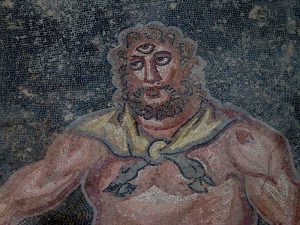Food and its taboos
8 min read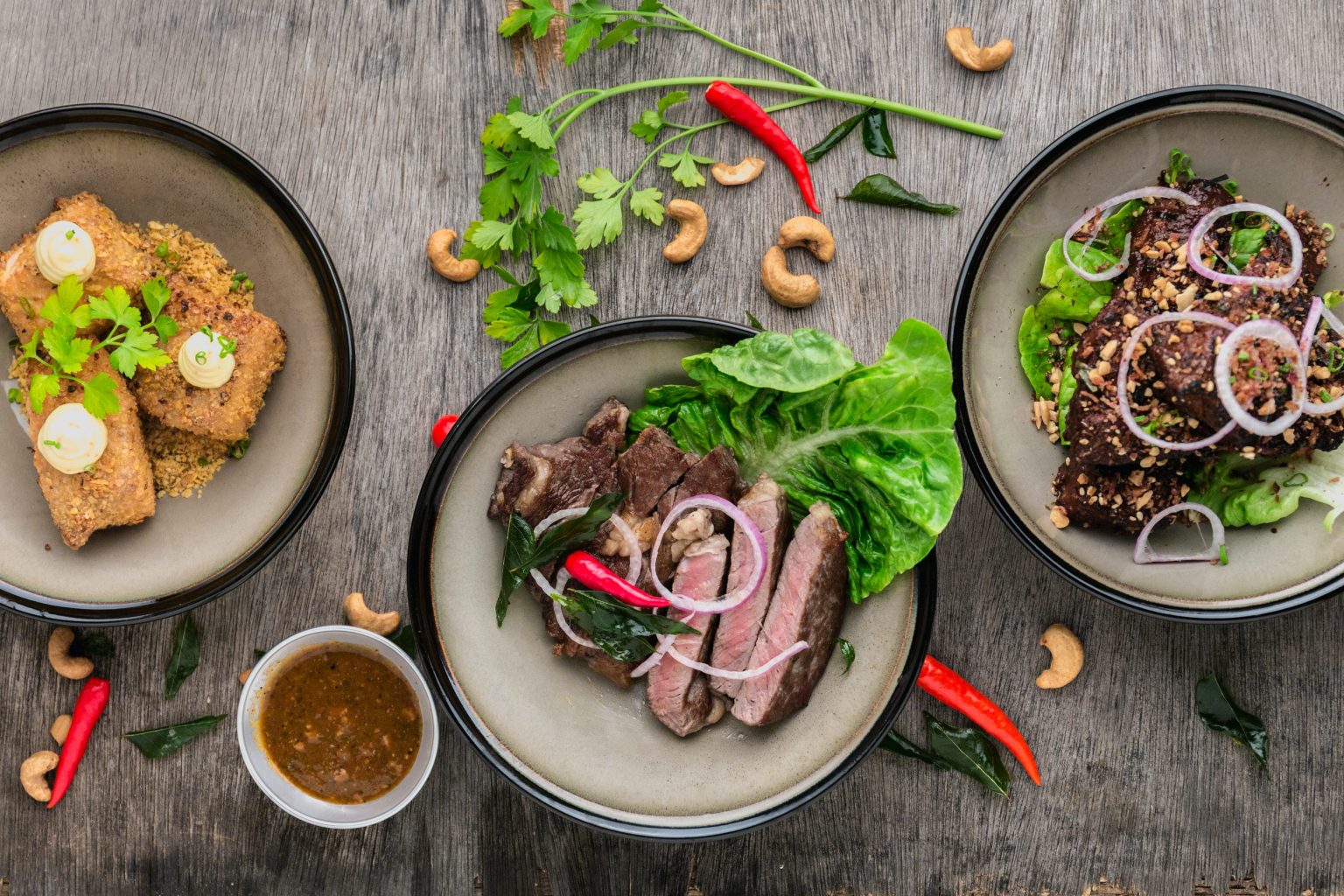
Food and nutrition are always topical issues, often linked to cultural features. Thanks to globalisation, the market can offer us everything we crave, nevertheless, sometimes we are still baffled by some foods that seem anything but good or even edible.
From our perspective, it seems absurd to eat grasshoppers as people do in Thailand or guinea pigs in South America, but for many African communities, salad, which is eaten all over Europe, is considered feed for goats. We can find food differences without moving too far away: for example, in Anglo-Saxon countries, people don’t eat rabbit or horse meat. These are considered pets and there is an emotional bond between them and man. Moreover, horses have always been regarded as means of transport and working animals, playing a fundamental role during wartime.
Food is a marker of cultural differences. We are an omnivorous species and we can eat everything that is edible, but there is no community that does it. There is always something that is rejected for various reasons. Every community identifies itself in terms of what its members eat and what they avoid eating. Food choices and habits become a community trademark which identifies others in what they eat.
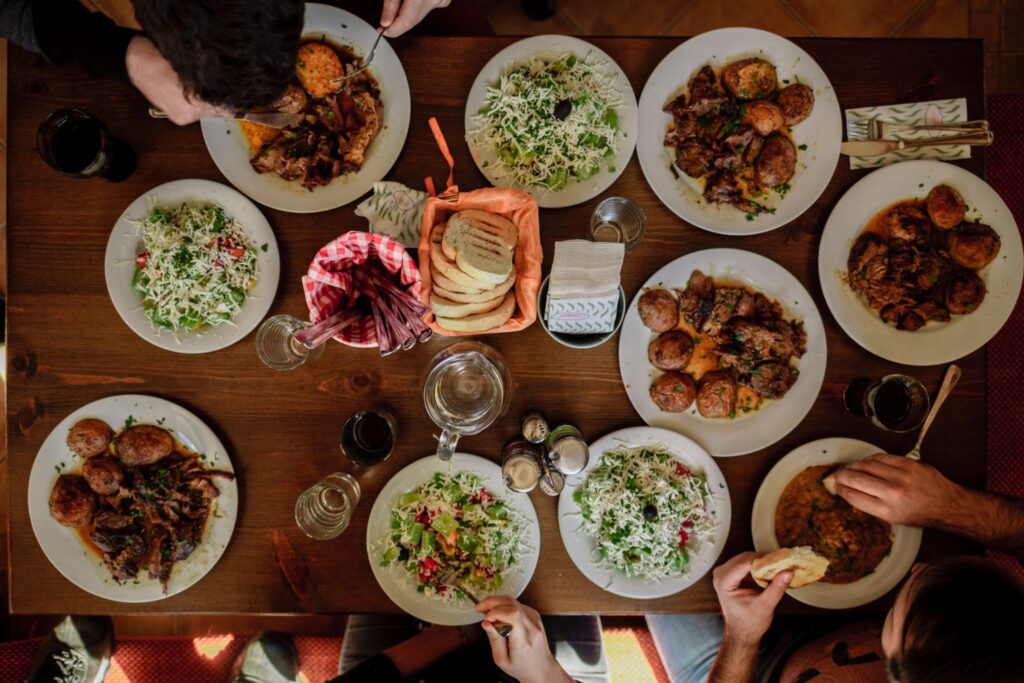
Why do we reject some types of food?
In addition to personal matters of taste, there are cultural choices that are made a priori by individuals in a community. Human beings are consumers of food by necessity, but they are also cultural and social consumers. Some things are excluded because they are not considered good to eat. The community is characterised by its own taste, a kind of collective taste: what a society considers edible or good on the one hand and what it does not consider good on the other. Individual taste is different from collective taste, but the former is inevitably influenced by the latter.
According to Claude Lèvi-Strauss (1908 – 2009), a French anthropologist and ethnologist, food is not only meant to satisfy caloric needs and to provide us with energy, but it must also satisfy a symbolic appetite: food must be good to be thought. When we eat we are fulfilled not only physically but also mentally. There are symbolic patterns that govern the relationship between human beings and food and we attribute certain meanings to food. If we take into account cooked and raw food, they become symbols of two opposing elements: the former symbolises civilisation and evolution, the latter wildness and primitiveness.
For the American anthropologist Marvin Harris (1927 – 2001), the social construct of taste occurs through rational choices whereby we consider something good on the basis of a cost-benefit analysis. It is not true that we do not eat something because we do not like it, we do not like it because we do not eat it. Collective taste as a cultural aspect is the outcome of a social and historically deep construct. Food is influenced, or even constructed, by environmental, cultural and historical factors.
Food choices of collective taste may be shared by the community but not rigidly imposed: no one bans a particular food, but it is not consumed because of a social tendency. There are also real prohibitions, the so-called taboos, also linked to religious principles, such as the ban on eating pork for Jews and Muslims, the ban on beef for Hindus, and vegetarianism for many Eastern philosophies. Finally, there are more individual choices made within the community, such as veganism for ethical or health reasons.
Taboo food and its origin
Let’s start from the definition of the word taboo: a ban or sacred prohibition on certain behaviours, objects, words, etc… It derives from the Polynesian word tàpu, which means both sacred and prohibited. The term was introduced in the West by the explorer James Cook in 1777 on his return from the Tonga Islands. Food taboos mostly refer to the consumption of meat from certain animals.

As regards pork, we find the prohibition of eating it respectively for Jews and Muslims, in the Book of Leviticus (Le. 11, 7-8) and in many verses of the Quran. This prohibition is linked to beliefs about pigs, which are considered unclean animals that carry disease and symbolise uncleanliness. If we analyse this taboo from a historical point of view, the domestication and breeding of pigs began around 6,000 BC in Mesopotamia. As the population grew, the communities changed from nomadic to sedentary, and it became necessary to create more and more fields to be cultivated. Thus began an endless spiral in which increased food production caused population growth and vice versa.
Inhabitants of these regions reached a crossroads. The pig produces a lot of meat (these animals are the best converters of plant energy into meat: a pig in its lifetime converts 35% of its weight into meat, while sheep 13% and cattle 6.5%), but it also has limitations. The pig walks very little, needs shade, large amounts of water and eats the same food as humans. Religion took on board a principle that was arising from ecological and demographic conditions: it was no longer convenient to raise pigs. So, since religious dogmas cannot be changed easily, this prohibition was imposed even in places where conditions were different and favourable for pig farming.
Another well-known taboo concerns the consumption of beef. In India, the cow is a sacred animal. It was considered man’s best companion as it not only provided milk, but also made agriculture possible in the Indian subcontinent. Around 1800 B.C., the Indo-Aryans, a people of farmers and cattle breeders to whom Vedic literature is attributed, migrated to northern India and controlled the area until 800 B.C.. This community consumed cow meat in large quantities, especially during the banquets of the Brahmans, the priestly caste, which were also attended by the lower castes. The massacre of cattle and the increase in population led to a reduction in forests, which were cut down to find land for agriculture. The farmers’ space came into conflict with the lands of cattle breeders, as uncultivated land was needed to graze the cows. Beef became a peculiarity of the upper castes, a privilege compared to the masses who consumed mainly dairy products, cereals and pulses. The higher castes began to be hated and by 600 BC the peasants were pushed to the limits of survival.
In the meantime, between the 6th and 5th centuries BC, Buddhism was founded and became widespread; not only it upheld respect for all animals, but also condemned the slaughter of beef cattle as an act of the ruling classes it opposed. The struggle between Buddhism, the religion of the poor, and Hinduism, the religion of the higher castes, went on for centuries. The Brahmans realised that they were too hated to eat this food, so they took a cornerstone of Buddhism and incorporated it into Hinduism: they became protectors of cattle. In addition, as Buddhism spread, so did the use of the plough and consequently the cattle were used as draught animals for work in the fields. The animal was more useful alive than dead, and thanks to it Indian agriculture experienced a great development until it prevailed over cattle breeding.
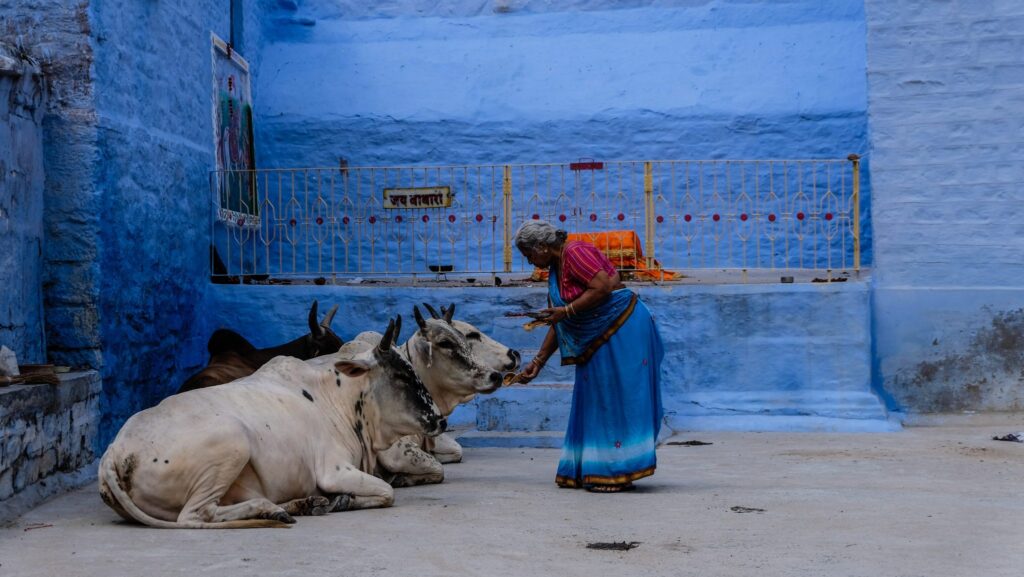
An example of a taboo for Westerners concerns the consumption of insects and arachnids. In recent times, this particular food has reached our ears, often referred to as the ‘food of the future’, but not yet on our table. The idea of eating these animals is deeply repulsive to us. The Jews are also forbidden to eat insects, except for some species of grasshoppers and crickets, in Leviticus (Lev. 11, 20-22). In contrast, the Gospel of Mark reports that John the Baptist ate locusts in the desert (Mar. 1:6), evidence of the presence of this food in the diet of desert peoples since ancient times.
From a nutritional point of view insects and arachnids are very healthy, they supply a great caloric intake in relation to the consumed quantity and they are rich in proteins. From a production perspective, there are regions of the world where there are huge quantities of insects, so harvesting the quantity needed to eat them is much easier. In the West, the consumption of insects has not developed because of the difficulty of collecting and breeding them due to the low concentration of edible insects.
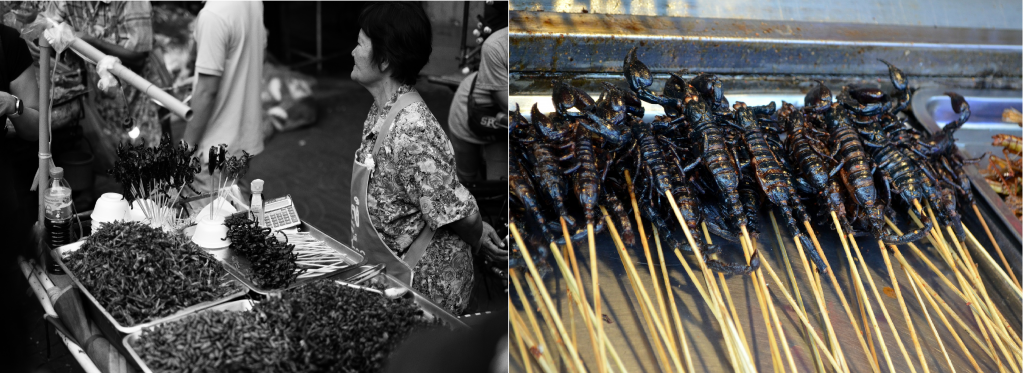
Travelling Food
As these three examples show us, food and taboos are influenced by environmental factors that lead people to make a cost-benefit analysis and, in addition, they are often linked to religious matters. It should be pointed out that food has always been a great traveller: food has moved around, it has been imported, exported and absorbed by other cultures. For example, products that previously did not exist in Europe arrived from the Americas, including maize, whose flour is used to make polenta, a typical dish of northern Italy. In the Mediterranean diet there are also foods that do not originate in the Mediterranean area: tomatoes come from western South America.
We consume a wide range of different food and we make it good to be thought of as traditional, we make it ours. There are already food influences from various parts of the world, just think of restaurants offering typical foreign dishes and fusion restaurants, where products from different countries come together to create a new idea of cuisine. In this constantly evolving perspective, we cannot exclude that one day food influences and encounters between cultures will lead us to experiment and go beyond traditional and personal taboos. One day at the supermarket we might find a specific department for insects, it will take time, but food is already on its way.
Read more:
Aime M., Il primo libro di antropologia, Einaudi, Torino, 2008
Harris, M. (1985). Good to eat: Riddles of food and culture. New York: Simon and Schuster.
Lévi-Strauss, C. (1996). The raw and the cooked. Chicago: University of Chicago Press.
Source text: https://www.antropia.it/il-cibo-e-i-suoi-tabu/
Mi chiamo Giorgia Padovani e sono appassionata di lingue straniere da sempre. Nel corso degli anni ho studiato diverse lingue, arrivando a conseguire una laurea magistrale in interpretariato e traduzione con inglese e russo. Sono curiosa di natura e penso che ogni occasione sia buona per imparare qualcosa di nuovo. Ho vissuto le esperienze migliori della mia vita all’estero, prima in Cile e poi a Londra. Credo fortemente che il mondo sia troppo grande e vario per rimanere sempre e solo in un posto. Per questo mi definisco radicata, ma con lo sguardo rivolto al mondo. Tra le mie passioni, oltre ai viaggi, ci sono la lettura, la fotografia, il cinema e i musical


